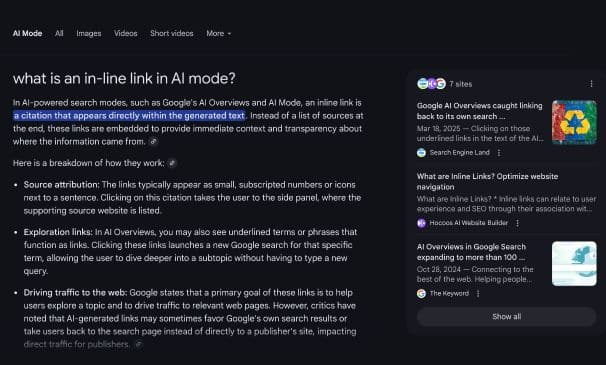As AI search experiences, chatbots, and AI-powered overviews become increasingly prevalent, for about the millionth time in the past 10 years, I’ve been hearing that ‘SEO is dead’.
Alongside this, I’ve seen a huge number of marketing agencies shifting to being ‘GEO specialists’.
The hype around AI agents and search engines has left many SEO professionals scrambling to calm client concerns around declining organic traffic figures, as businesses worry about their digital visibility in an AI-dominated landscape, so proclaiming to be experts in GEO is a smart move, whether it’s true or not.
However, Google’s recent announcement about enhanced in-line linking in AI Mode suggests these obituaries for SEO have been greatly exaggerated, and should help alleviate some of the concerns that both SEOs and their clients have been grappling with.
The evolution of AI search experiences
Google has announced that in-line links within AI Mode responses represent a significant development in how users interact with AI-powered search results. According to Google Exec, Robbie Stein:
“We’ve found that people really prefer and are more likely to click links that are embedded within AI Mode responses, when they have more context on what they’re clicking and where they want to dig deeper. We’ve launched embedded link carousels in AI Mode responses on desktop, with mobile coming soon.”
This development isn’t entirely surprising when we consider Google’s AI Overviews (AIOs), which have already been incorporating citations and source links to varying degrees. What’s noteworthy is Google’s commitment to expanding this functionality, with embedded link carousels launching on desktop and mobile versions following soon after.
User behaviour remains fundamentally unchanged
Despite the shift towards more conversational search queries and AI-powered responses, the way most users consume information online hasn’t drastically changed. People still want to verify information, explore topics in greater depth, and access authoritative sources. The difference now is that AI provides a more streamlined entry point to this exploration.
When an AI agent or search engine provides a comprehensive answer but users want to fact-check, find additional examples, or understand the methodology behind a claim, they naturally seek out the source material. In-line links serve this exact purpose, creating a bridge between AI-generated responses and the websites that provide the underlying information.
The zero-click search myth
Critics often point to the potential for ‘zero-click searches’ as evidence of SEO’s demise. However, this concern isn’t new or unique to AI search. Google’s SERP features like featured snippets, Knowledge Panels, and ‘People Also Ask’ boxes have been addressing user queries directly for years, sometimes reducing the need to click through to websites.
Yet SEO didn’t die; it evolved. The same principle applies to AI search experiences. While some users may find their answers satisfied by AI responses alone, others will continue to seek out original sources, detailed explanations, and authoritative content that goes beyond what an AI summary can provide.
SEO fundamentals remain critical
The introduction of in-line links in AI Mode actually reinforces the importance of established SEO best practices rather than undermining them:
Quality content creation remains paramount. AI systems need authoritative, well-researched content to reference and link to. Websites that consistently produce valuable, accurate information are more likely to be cited and linked within AI responses.
Link building continues to matter. Strong backlink profiles and domain authority help establish credibility with both traditional search algorithms and AI systems, determining which sources to reference and link to.
Brand authority is increasingly valuable. As AI systems prioritise trustworthy sources, building brand recognition and establishing expertise in your field becomes even more crucial.
Diversified digital marketing strategies are essential. Relying solely on organic search has always been risky. The shift towards AI search reinforces the need for multi-channel approaches, including social media, email marketing, content partnerships, and direct traffic generation.
Trust signals matter more than ever. Reviews, case studies, testimonials, and other forms of social proof help establish the credibility that AI systems look for when determining which sources to cite and link to.
SEO isn’t going anywhere – for now
The trend towards citation and source linking isn’t limited to Google. Other AI agents and search engines are increasingly providing references to their information sources, recognising that transparency and verifiability are crucial for user trust.
While the volume of clicks may shift, and user behaviour may become more conversational, the underlying need for authoritative, trustworthy content remains constant. Google’s focus on improving in-line linking in AI Mode demonstrates its commitment to maintaining the connection between AI-powered answers and the web ecosystem that supports them.
Rather than signalling the death of SEO, Google’s enhanced in-line linking represents an evolution in how users discover and interact with content. The fundamentals of good SEO practice – creating valuable content, building authority, and establishing trust- remain as relevant as ever, simply accessed through new pathways.
The message is clear: SEO isn’t dead; it’s adapting to a new era of search experiences that still fundamentally depend on the quality and authority of the underlying web content.

